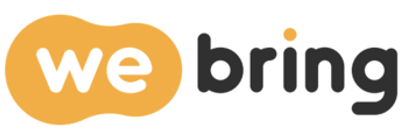For those planning to study in Korea—whether through a full degree program, exchange program, or graduate school—Korean language institutes (어학당) serve as an essential starting point. Your choice of language institute can significantly impact the speed and quality of your Korean learning, as well as your chances of being accepted into degree programs. However, with many university-affiliated and private institutes offering different programs, beginners may feel overwhelmed when trying to decide where to begin.
This post explores the key factors to consider when choosing a Korean language institute, how programs vary depending on your TOPIK goal level, and useful practical tips to know before enrollment.
1) Types of Language Institutes: University-Affiliated vs. Private Academies
First, it’s important to understand that there are two major types of Korean language institutes: university-affiliated programs and private academies. Many university-affiliated language centers are operated directly by Korean universities and typically follow a quarterly system (spring, summer, fall, winter), offering 10- to 12-week programs per term. Tuition generally ranges from KRW 1.6 million to KRW 2 million per term. These programs usually feature organized curricula and well-equipped facilities, making them a stable choice for long-term study.
On the other hand, private academies tend to offer more flexibility with rolling admissions and a variety of class options, including beginner to advanced levels and private tutoring. Tuition may be lower than university programs, but the quality varies significantly, so it’s important to check reviews or get personal recommendations. Private academies are often favored by those with limited time or who seek intensive one-on-one instruction.

2) TOPIK Target Level and Study Duration
The Test of Proficiency in Korean (TOPIK) is the most recognized exam for evaluating Korean language proficiency. Your choice of language program should align with your goals—whether it’s reaching TOPIK Level 3 for university admission, or aiming for Level 4 or higher to qualify for scholarships or jobs.
Generally, achieving TOPIK Level 3 requires at least 6 months to 1 year of study through beginner and intermediate levels. However, your personal language aptitude and study effort will play a large role, and a longer period is usually required to move from intermediate to advanced levels. It is important to evaluate your current proficiency and set clear goals—such as aiming for a certain TOPIK level within a set number of months—then select a suitable program and duration accordingly.
3) Admission Periods and Application Process
Most Korean language institutes offer quarterly sessions throughout the year (spring, summer, fall, winter). Be sure to check application deadlines, which usually close at least a month before the term begins. Required documents typically include a passport copy, graduation certificate, academic transcripts, and proof of financial support. Depending on your country, you may also need apostilles or certified translations.
Especially for those applying for a D-4 (language training) visa, obtaining an acceptance letter from the language institute is essential. Make sure to follow the application timeline precisely, or you may miss your term or experience visa delays. Check the school’s official website or contact the international office in advance to confirm the specific deadlines and required documents.
4) Curriculum Comparison: Intensive vs. Part-Time
Most language programs offer intensive courses that run for 20–25 hours per week (4–5 hours per day). These programs can dramatically improve language skills, but they may also leave little time for part-time jobs or other personal activities.
Some institutes offer part-time courses with fewer than 10 hours per week, or weekend classes. These are ideal for combining with work or other studies, though they are slower-paced and potentially less effective. If your goal is to pass TOPIK quickly, an intensive course offers the most efficient path. Supplementing with extra review and speaking practice outside of class can further boost your progress.
5) Class Atmosphere and Teaching Methods
Even within the same university-affiliated institute, class atmosphere and teaching styles may vary by level and instructor. Some classes focus on conversation and speaking, while others emphasize grammar and reading comprehension. If you have specific needs—such as wanting more speaking practice or focused TOPIK test prep—it’s wise to review the curriculum and check teacher evaluations before classes begin.
In fact, students sometimes seek language exchange meetups or study groups to supplement classes that lack speaking opportunities. Conversely, those good at speaking but weak in grammar may benefit more from curriculum-heavy grammar-focused classes. Asking staff or senior students about course characteristics in advance can help ensure a better fit.
6) Facilities and Surrounding Environment
The location of the language institute—on campus or within the city—is also important. Check whether dormitory housing is available or if off-campus options like studio apartments or shared houses are nearby. It also helps to ensure the area has ample library space or quiet study environments.
Convenient transport and active student clubs or exchange events with Korean students can provide more opportunities to practice Korean in real-life situations. Also, check for nearby restaurants, supermarkets, and useful amenities. Choosing a location where you can interact with Korean friends and engage in local experiences may help you use Korean more often in daily life. Institutes in quieter suburban areas might be great for focused study, but they may offer fewer cultural experiences, so weigh the pros and cons carefully.
7) Tuition and Scholarship Programs
University-affiliated institutes usually have higher tuition but benefit from larger student communities and more stable instructional quality. In contrast, private academies often offer more affordable pricing, short-term courses, or flexible personal lessons. Consider your budget and whether you can commit to daily intensive study before making a decision.
Some language institutes offer scholarship programs for students with high attendance rates or academic excellence. Occasionally, bonus scholarships are awarded for achieving certain TOPIK levels. To avoid missing out on these chances, be sure to regularly monitor the school’s website and official announcements.
8) Field Activities and Cultural Experience Programs
Many university-affiliated language institutes organize regular cultural activities beyond language classes. These could include wearing hanbok (traditional clothing), cooking traditional Korean foods, temple visits, K-POP dance or Taekwondo sessions, and participation in local festivals. Such programs provide real-life practice of Korean language skills and a vivid introduction to Korean culture.
Participating with classmates in cultural activities can also strengthen bonds and naturally lead to more Korean-language partnerships. These extracurricular elements can be just as important as tuition in evaluating a language program.
9) Leveraging Alumni Experiences and Reviews
One of the best ways to gather realistic information about a language institute is to read reviews and testimonials from former students. Through online communities, social media, or blogs, you can find valuable insights that aren’t listed on official websites—such as classroom atmosphere or teaching style. For example, “Institute A has strict attendance policies but excellent instruction quality,” or “Institute B is fun and conversation-focused but weak in grammar structure.”
Look for open chat rooms on KakaoTalk or Facebook groups in your native language, where international students share advice on school reputation, textbooks used, or how class levels are structured. These firsthand accounts can be crucial to your decision-making process.
10) Final Decision and Mindset
Ultimately, the most important factor in choosing a language institute is knowing why you want to learn Korean and what your goals and timeline are. Are you pursuing a TOPIK score, deeper cultural immersion, or meeting language requirements for a degree program? Having a clear purpose will help keep you focused throughout your studies.
No matter which institute you attend, your personal dedication and study habits will heavily influence your progress. Attending classes without reviewing afterward will limit your improvement. On the other hand, making Korean friends, joining language exchanges, and watching K-dramas or variety shows can make your learning journey more dynamic and enjoyable.
Conclusion
Choosing the right Korean language institute involves considering many factors, but taking the time to make a thoughtful decision can significantly shape your study abroad experience. Find a program that matches your goals, budget, and lifestyle so you can build a solid foundation in Korean, pass TOPIK, and take the next steps toward your academic or career goals. Though your time in a language program may seem brief, it lays the cornerstone for your journey in Korea.


WeBring Service : Provides personalized services to foreigners living in Korea
Exclusive offer: Introducing foreign car rental in Korea, WeBring-SoCar

